Current horse property listings for the Cave Creek, Scottsdale and Rio Verde within the last two weeks. November 24th – December 8th.
View the listings click here.
In order to be considered a #horseproperty the listing must contain at least a stall or tack-room.
This is a great time to buy or sell and the inventory is low. Give me a call if you’re thinking about selling or buying.
Thank you in advance for your referrals.
Ron Bykerk
480-221-1280
West USA Realty
7077 E. Marilyn Rd #130
Scottsdale, AZ. 85254
#horseproperty #arizonahorseproperty #AZHPR #newhorseproperty #horse #horses
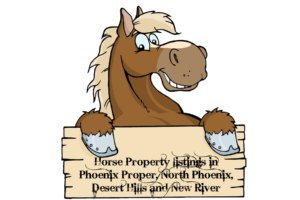
Current horse property listings for the Phoenix proper and North Phoenix, Desert Hills and New River.
View the listings click here.
In order to be considered a #horseproperty the listing must contain at least a stall or tack-room.
This is a great time to buy or sell and the inventory is low. Give me a call if you’re thinking about selling or buying.
Thank you in advance for your referrals.
Ron Bykerk
480-221-1280
West USA Realty
7077 E. Marilyn Rd #130
Scottsdale, AZ. 85254
#horseproperty #arizonahorseproperty #AZHPR #newhorseproperty #horse #horses
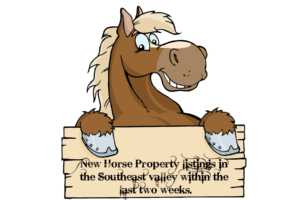
Here’s a link to active new #horseproperties within the last two weeks for the Southeast Valley for the dates of October 29th – November 12th.
View the listings click here.
In order to be considered a #horseproperty the listing must contain at least a stall or tack-room.
This is a great time to buy or sell and the inventory is low. Give me a call if you’re thinking about selling or buying.
Thank you in advance for your referrals.
Ron Bykerk
480-221-1280
West USA Realty
7077 E. Marilyn Rd #130
Scottsdale, AZ. 85254
#horseproperty #arizonahorseproperty #AZHPR #newhorseproperty #horse #horses
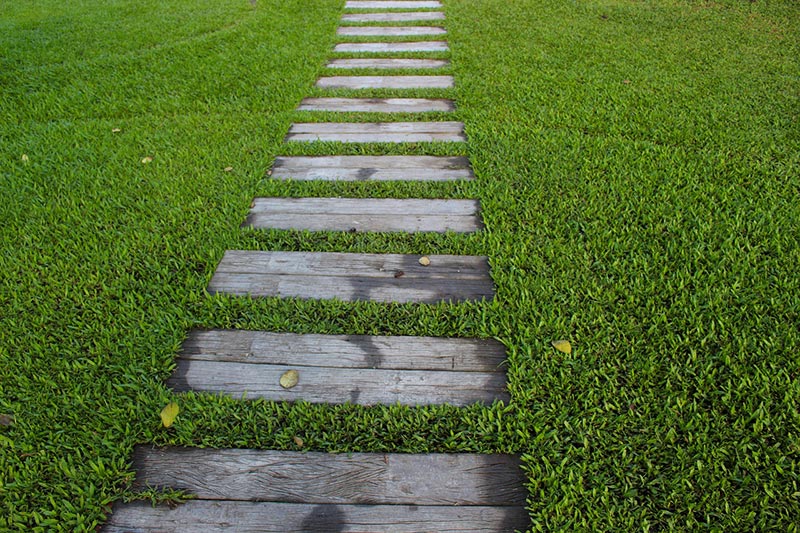
How Arizona Horse Property homeowners treat their yard this autumn can determine the quality of their yard next spring and summer. Here are some helpful tips to help you lay a strong groundwork for a great yard next spring:
Grass still needs regular care to stay healthy. Grass that is too high may attract lawn-damaging field mice. Shorter grass is more resistant to diseases and traps fewer falling leaves. Cutting the grass low also allows more sun to reach the crown of the grass. However, cutting off too much at one time can be damaging, so never trim more than a third of the grass blades off in a single cutting. Put mower blades on the lowest settings for the last two cuts of the season.
Compressed soil can hurt the health of the grass. Aerating punches holes in the soil and lets oxygen, water, and nutrients into a lawn. Use a walk-behind aerator or get an attachment to pull behind a riding mower.
Many mowers can mulch leaves with an attachment. Since mulching with a mower can mix grass clippings with leaf particles, these nitrogen-rich grass particles and carbon-rich leaf particles will compost more quickly. They can then return nutrients to the soil.
Use trimmers, chainsaws, or pole pruners to cut back trees, shrubs, and plants. Make sure branches are safely trimmed back from overhead lines and not in danger of falling on a home or structure in winter weather. You may need to tie or brace limbs of upright evergreens or plants to prevent them from breaking in high winds or snow. Call a professional arborist for big trees or hard-to-reach spots.
Fall is a great time to patch bald or thin spots in a lawn. The easiest way to do this is with an all-in-one lawn repair mixture (found at most garden shops and home centers). Use a garden rake or dethatcher to scratch loose the soil on the spot.
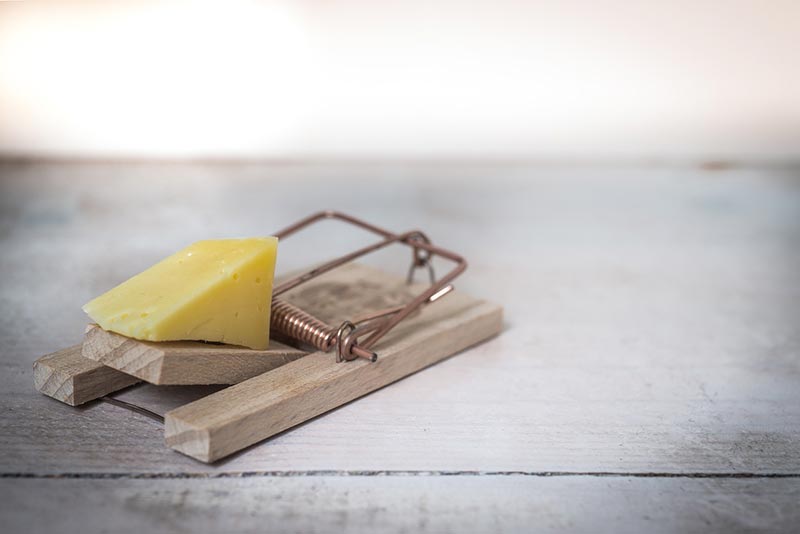
If you’ve noticed unusual signs of damage around your property, pests may be to blame. Rodents, insects and other types of pests can wreak havoc on properties. Here are some signs of pests possibly causing damage in your Arizona Horse Property home.
The sudden feeling that the floors in your home are unstable could be a sign of a pest problem. This may be especially true if you have hardwood floors that are damaged because of termites. You might notice the boards curling on your floor as damage persists. Flaking and crumbling may also become noticeable as your floors continue to deteriorate from the damage. Crushed-looking wood at structurally significant points can be another obvious sign of a pest problem.
Damage that’s impossible to see can sometimes be detected by performing a tap test on wood surfaces around your home. Wood that’s solid all the way through should produce a thudding sound when tapped, and any hollow sounds could mean that termites or other pests are wearing away at the wood. Hollow sounds also mean that significant portions of your wood have already been lost, and calling a termite treatment specialist and contractor to repair the damage can resolve the problem and protect your home’s structure.
If lights, appliances or other equipment around your home that’s powered by electricity start to fail, you might have a pest problem on your hands. Lights that dim or completely go out along with appliances that don’t have as much power or fail to turn on when plugged in could mean that pests are damaging the wires. Rodents are known to chew through wires, which can also create a fire hazard in your home.
Tubes that appear to be made of mud may be visible in your yard and even on the side of your home. These tunnels are often constructed by organ pipe mud dauber wasps to store their larvae. Termites are also known to build tunnels that look like mud but are made from a combination of soil and wood along with a substance consisting of their saliva and feces. You might find these lining walls and floors, acting as a sure sign of infestation if you find them in your Arizona Horse Property home.

According to the Department of Justice, there are 10 percent more burglaries in the summer than in the winter. Additionally, the rate of household property victimization and household larceny also peak during the hottest months of the year. This time of year also happens to be when most of us pack our bags and head out for vacation.
While you’re out enjoying the summer weather, you don’t want to worry about what’s happening at home. Here are 10 tips to protect your home while on vacation.
Over 30 percent of burglars enter a home through an unlocked window or door. A few weeks before your vacation, check the windows and doors of your home to be sure they shut and lock properly. Make repairs as necessary, and verify they’re all secure on the day you leave for vacation.
In addition to reducing the chance your home will be burglarized by 300 percent, many leading systems offer remote access so you can check your home security from your phone. You can even use your device to lock/unlock doors or check on pets via security cameras. Plus, your insurance provider may discount your home insurance premium by up to 20 percent when you install a security system – and that savings could help pay for your vacation!
Many homeowners focus on the main body of their home and forget to secure the garage. Fortunately, there are several easy ways to help protect your garage from a break-in, including installing motion detector lights on the corners of the garage, ensuring the garage service door is locked, and hiding valuables out of sight. If you leave a car in the driveway, be sure to remove the garage door remote. A burglar won’t think twice about breaking into your car and using the remote to access your garage.
Light timers are affordable, easy to install, and can help deter criminals by making your home look occupied. Choose a timer with a “random on/off” option, so your lights turn on and off at various times throughout the day and night, making it difficult for burglars to determine if the home is vacant.
Over one-third of burglars enter a home through the front door, often using the homeowner’s “hidden” key. If there’s a key under your doormat or in another obvious location, remove it. You may also want to consider replacing your traditional front door lock with a keyless lock so you don’t even have to worry about keys.
Assuming you trust your neighbors, it’s a good idea to inform them you’ll be on vacation and leave a number where you can be reached. Make them aware of anyone who might be going into your home, such as a house sitter or dog walker. For extra protection, ask your local police department and neighborhood watch to be on the lookout for any unusual activity near your home.
Prepare your home for your departure by putting valuables – grills, bikes, and tools – in a secure shed or garage, and trimming shrubs so burglars can’t conceal themselves while trying to break into your home. If you have a gate that provides access to your yard, make sure it shuts and locks. Scan your property for anything a burglar might use to break into your home, such as a brick or hammer, and take it inside.
Enlist the services of a house sitter to keep an eye on your home while you’re away. He or she can pick up fliers left at the door, bring in the mail, and take garbage and recycling bins to the curb. These things help hide the fact you’re not home.
Protecting your house from a break-in is important, but you also want to avoid problems with utilities, like electricity or water. Unplug appliances, turn off the water valves to all sinks, the dishwasher, and washing machine, and test your smoke detectors.
If your lawn is overgrown, it can be a telling sign to people that no one is there to do upkeep. If you don’t have a regular lawn service, consider scheduling lawn maintenance once or twice while you’re away.

Many folks enjoy spending time outdoors in their own yards—provided they’re landscaped just right. And what people want in landscaping changes all the time. So what are the top landscaping trends of 2019? The National Association of Landscape Professionals, a trade organization with about a million members, provided its annual forecast of this year’s must-haves.
“What we’re seeing is people’s desire to make their outdoor living space an extension of their home. People are being very intentional with how they want to use their outdoor spaces,” says NALP spokeswoman Missy Henriksen. “It used to be people would put in the basics of outdoor decks or patios. Now people are looking more at how they will use their space. So perhaps the pergola they put in has shading so if they work outside they can see their laptops. We’re seeing more requests for charging stations.”
It’s not enough to just have a scenic backyard. Homeowners want it to be functional too. That means the things in that yard need to serve multiple purposes. For example, a vertical vegetable garden grown on a trellis can also serve as a privacy fence. Or a retaining wall can include built-in seating, good for conversing with friends or watching movies projected onto a screen. Folks are getting creative!
“We’re all very busy people,” says Henriksen. “Instead of people putting a new feature in their landscape, they expect it to be more than just pretty.”
Forget waking up early on the weekends to tend to the garden. Homeowners these days are embracing new technologies that take away the humdrum tasks they dread—like mowing the lawn and watering the plants. So they’re investing in things like robotic lawn mowers, programmable irrigation systems, and lighting that turns off automatically. Set it and forget it!
This isn’t your grandmother’s pergola. These overhead structures, which provide shade and a place to string lights and hang plants, are getting a 21st-century upgrade. This means enclosed versions with space heaters, state-of-the-art sound systems, and sophisticated, built-in lighting.
“People now design around them,” says Henriksen, adding things like outdoor kitchens, fire pits, and seating areas. “People are recognizing they are magical experiences to be enjoyed outside.”
The hot color to incorporate into your yard this year is pink. NALP expects homeowners will pick roses, petunias, zinnias, and hibiscus flowers in shades of coral and blush to add color to outdoor spaces. Light blush tones could even become the “new neutral.”
Homeowners looking to add sleek pizzaz to their outdoor escapes may want to turn to metal elements, like steel and iron, to incorporate into their design. This can include accents like decorative art, focal points such as streaming fountains or mini waterfalls, and furniture.
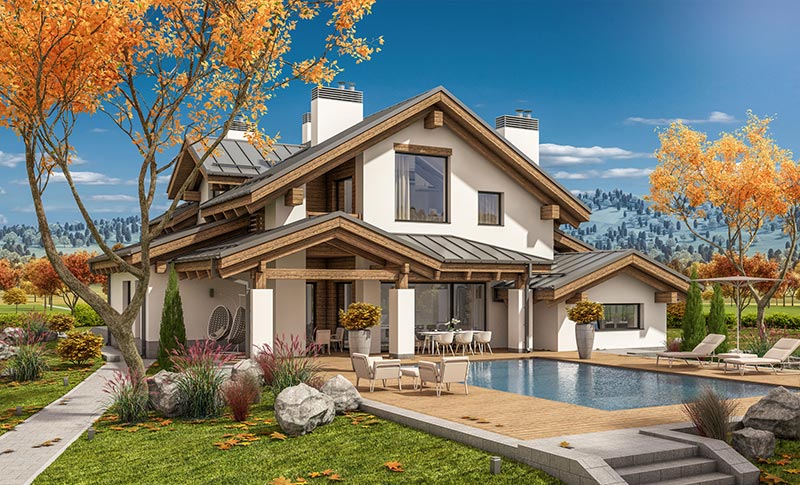
Buying a home in Arizona Horse Property is exciting. But it can come with some unplanned surprises. One of these is unexpected home renovation you may need to tackle after moving in. These can be sudden repairs or upgrades required that even your home inspector didn’t foresee.
New data show that many buyers encounter unplanned improvements needed soon after taking possession. A good chunk of them lack the funds to cover these repairs.
Don’t get blindsided by an unexpected home renovation soon after you become an owner. Aim to have extra money set aside in the event of a fix-it emergency. And know where to turn to in a pinch for resources like contractors and repair experts.
The recently published 2018 NerdWallet Home Improvement Report had some interesting findings. Among its revelations:
Bruce Ailion, Realtor and real estate attorney, says he’s not surprised by some of these findings.
“Consider that about one third of buyers are first-time buyers. They have had no experience with home ownership and its hidden costs and responsibilities,” he says.
Angat Saini, attorney and owner of Accord Law, also isn’t shocked by the report’s results.
“We often get calls from buyers after they move into a property. They say they’re looking for some sort of remedy to deal with unexpected repairs or damages,” Saini says.
“But it’s extremely difficult for a buyer to recover funds from the seller in such cases,” adds Saini. “That’s because most purchase agreements only provide a warranty on items within the home up until the closing date. It’s rare for seller to provide a home warranty on the structure, electrical, plumbing, or other key system or component.”
Say your home inspection didn’t find any red flags. That doesn’t mean your home is clear from problems. Mechanicals, appliances and materials can break down or present a defect at any time. This can even happen hours after closing on your home.
For example, the roof can suddenly start leaking. The oven can stop working. A pipe can abruptly burst and cause water damage. If it’s not covered by a warranty or your homeowner’s insurance, you may have to cover repair or replacement costs.
“A home is a complex system,” says Ailion. For example, “a home can experience a premature failure in a water heater, dishwasher, refrigerator or HVAC system.”
“There are certain costly items in a home that don’t last forever. These include roofs, windows and furnaces. These can lead to major financial headaches without the proper planning and budgeting,” Saini says.
A big culprit? Lack of education on the issue, insists Saini.
“Industry professionals like agents, brokers, inspectors and lawyers should be educating buyers better on the duties of home ownership,” he says. “First-time buyers have to take responsibility and learn the facts. But some of the blame can fall on the professionals who may not have taught them what to expect.”
Another problem is lack of due diligence.
“Inexperienced buyers fall in love with a home. They often purchase it, warts and all,” Ailion adds. “But they can overlook the risks. They often fail to request that the seller replace older items. They could have insisted on a home warranty to cover all or most of the cost of the repair.”
Ralph DiBugnara, senior vice president with Residential Home Funding, says this often happens with younger buyers.
“Most millennials are just concerned with getting in the home. They qualify for financing,” says DiBugnara. “But they don’t take into account all the other bills that come along with owning. These include wear and tear, maintenance and repairs.”
Want to prevent buyer’s remorse? Yearning to protect yourself from the financial pain of paying for an unexpected home renovation? Try these tips:
Finally, shop around. It seems obvious, but studies show that most consumers don’t get multiple quotes — for mortgages or other home-related services.
When you need an item repaired or replaced, ask friends and family for referrals to experts they trust. “Real estate agents are a great source for a reference to a quality contractor,” says Ailion. Also, “Try to get multiple competitive bids. And be patient while shopping around. Currently, there are skilled labor shortages in most markets. That makes it difficult to find affordable skilled workers.”

A typical American household spends $2,060 a year on electricity, according to the U.S. Department of Energy. Unfortunately, if a home isn’t efficient, a lot of that energy goes to waste—possibly as much as three-quarters of it, according to Renewable Nation, a Washington, D.C.-based non-profit focusing on affordable and clean energy. Here are some money and energy saving suggestions from Renewable Nation’s app for homeowners.
1. Start by getting a home energy audit. Whether through the Building Performance Institute or the Residential Energy Services Network, certified professionals can conduct a home or building assessment that will help shed light on where energy is being lost and which systems are operating below par. The findings can be used to identify cost-effective improvements to make the property more comfortable and efficient.
2. Seal air leaks. Homebuyers are willing to pay a $7,095 more for a home that will reduce energy costs by $1,000 a year, according to the National Association of Home Builders. Sealing leaky windows, doors, and electrical outlets with caulk, expandable sealant, and weather stripping will help. Hiring a professional to insulate and seal ductwork in forced-air heating and cooling systems can also help lower energy bills by as much as $400 a year, Renewable Nation says.
3. Consider water usage and the water heater. Heating water is typically the second-largest energy use in a home, and can alone cost $600 or more a year, according to Renewable Nation. A homeowner can cut those costs in half by switching to a hybrid water heater that combines a standard water heater with a heat pump. If that’s not an ideal option, simply washing clothes in cold water can save $63 a year in energy costs.
4. Get a smart thermostat. Heating the overall space of a home or property is the largest energy expense, accounting for about 45 percent of residential energy bills, according to the U.S. Department of Energy. An owner can save 10 percent each year on heating bills by turning down the thermostat 7 to 10 degrees (Fahrenheit) for eight hours a day. A programmable thermostat can help accomplish that.
5. Avoid the “phantom” menace of energy drains. Electricity used by electronics when they are turned off or in standby mode are a major source of energy waste. Smart power strips can help eliminate the problem of phantom loads by shutting off the power to electronics when they are not in use.
6. Upgrade the fridge. If a refrigerator or freezer is more than 15 years old, it may be so inefficient that a new one would pay for itself in energy savings in just a few years. The American Council for an Energy-Efficient Economy says modern refrigerators and freezers consume 20 to 25 percent less energy than older models.
7. Flip the switch on smart lights. Replacing your home’s five most frequently used light fixtures or bulbs with Energy Star models could save $75 per year.
8. Look for the Energy Star label. If you are considering appliance upgrades, remember that using products with the Energy Star label can help save up to 30 percent on related electricity bills.